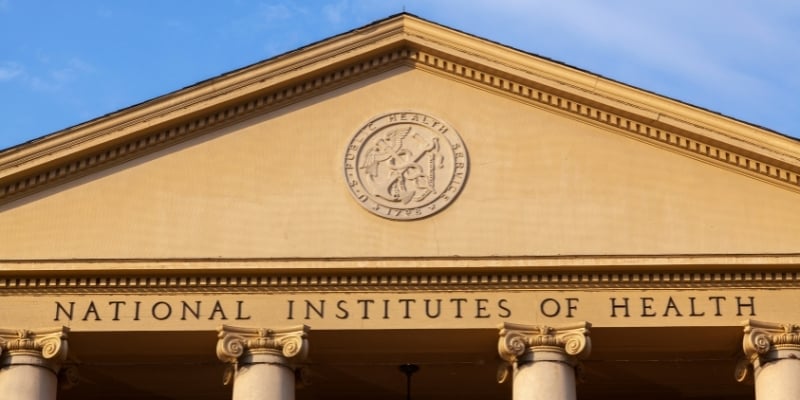Across Colorado, a diverse community of some 60,000 often unseen and overlooked people dots the state. They are refugees who have fled drought, poverty, persecution, violence and other threats from countries around the globe. But their challenges do not cease once they arrive in Colorado. Their plight frequently contributes to chronic medical problems.
“A lot of [refugees] have faced really challenging lives prior to migration and resettlement,” said Ethan Tietze, MPH ‘22, a recent graduate from the Colorado School of Public Health and a current academic services professional with the school’s Rocky Mountain Prevention Research Center (RMPRC). “They are also trying to navigate a transportation system, the food environment, the language, the culture, and discrimination. And then they are sometimes trying to support a large family on one income.”
Tietze’s work with the RMPRC has contributed to adapting two well-established programs to fit the needs of refugees: Text2LiveHealthy (T2LH) and the Culture of Wellness in Preschools. The initiatives encourage kids and adults to improve and maintain their health by making basic but effective lifestyle changes, such as eating more fruits and vegetables, drinking water instead of sugary drinks, and staying active.
T2LH delivers digital messages that support these behaviors and provides online resources to parents and teachers. The text approach aligns with the Culture of Wellness in Preschools (COWP) program. That 12-year-old initiative, now implemented in approximately 150 preschools and schools across Colorado, aims to prevent childhood obesity through a structured program that educates and involves kids, parents, teachers, and school staff.
Now the RMPRC is extending its reach by adapting health and wellness messages to the needs of the refugee communities in Colorado, said Jini Puma, PhD, associate director of the RMPRC and the principal investigator for the T2LH and COWP programs.
Connecting with overlooked communities
Puma noted, for example, that the RMPRC began work three years ago with the nonprofit iNow (Integration: Navigation, Outreach and Wealth-Building) to adapt its T2LH messages for refugees who have been in the country long enough to speak English. Those modifications opened more possibilities for meaningful communication with refugees, Puma said.
“We realized that we had made a good start but there is a need to go even deeper and to begin to explore adapting our programs not only culturally but linguistically,” Puma said.
That work requires close collaboration with members of the refugee communities, said Tietze. He learned that firsthand in working on the capstone project for his Master of Public Health degree, which involved helping to direct T2LH messages to refugees.
It was a joint effort, Tietze said. iNOW helped connect Tietze and others in ColoradoSPH to “community navigators” representing Afghan, Ethiopian, Arabic-speaking and other refugee communities. These representatives, along with other community members, joined a steering committee that worked to develop communications about healthy behaviors aimed at refugee individuals and families, Tietze said.
“We reviewed messages with them and asked what they needed from their community, what they wanted, what were some different issues facing their community, and what were the strengths of their community,” he said. The messages had to address dietary restrictions, cultural traditions, language skills, and the characteristics of the neighborhoods where individuals reside.
Crafting healthy messages for unique audiences
For example, a refugee-directed T2LH message encouraging more physical activity used emojis and short videos for specific exercises, like stretching and full-body workouts. The text pinpointed indoor exercises for people whose living conditions might make it difficult to do so outside – an example of the many potential barriers to wellness for refugees, Tietze said. The careful messaging to refugees has helped expand the number of T2LH subscribers to 544 as of late September 2023, he added.
The next step for T2LH, now underway, is to develop messages in Dari, the main language of Afghanistan, and later Arabic, Tietze said. That work will also allow information from the COWP program to go to individuals who for now can’t access it because of language barriers, he explained.
Building a culture of wellness in refugee communities
The Culture of Wellness in Preschools (COWP) program has also required adaptation to meet the needs of refugee families, Puma said. The original plan, launched in 2011, is preschool based with five classroom strategies to encourage healthier diets and regular activity. Puma said that framework did not meet the needs of many refugee families.
“In the course of our work with refugees, we realized that many don’t place their children in center-based care,” Puma said. “They tend to have young children cared for by family, friends and neighbors.”
To address that difference, RMPRC used two of the COWP components – a six-week parenting workshop and child nutrition lessons – and the T2LH program “to better meet the needs of informal refugee providers and the children in their care,” Puma said.
The initial six-week workshop, which included a Dari interpreter, drew 21 families – an encouragingly large number, Puma said. The materials presented in the workshops are again informed by a steering committee that includes, among others, Tietze; Fatima Fagbenro, a second-year Doctor of Public Health candidate at ColoradoSPH; and members of the Dari-, Pashto-, and Arabic-speaking communities. The committee was assembled with help from Pamoja, a collaboration between Lutheran Family Services Rocky Mountains and Empowering Communities Globally that provides a host of education and training programs for refugees and other immigrants.
The importance of collaboration
Fagbenro, who works on adapting the COWP workshop lessons, said ColoradoSPH recognizes that improving the health of refugee communities relies on collaboration and mutual support.
“The school is basically trying to take advantage of their relationships with the communities and the trust that is there,” Fagbenro said. “We use that to encourage healthy behaviors. The community makes it easier for people to be healthier, as opposed to placing the burden on the individual.”
Community participation “is great for everyone,” Fagbenro added, but it is especially important in working with refugees.
“We’re talking about a community that is removed from their natural habitat and in an entirely different culture,” she said. “You have to go to that community with people that look like them and can speak to them in their culture and identity.”
Messaging that recognizes diversity
Fagbenro added that in crafting workshop lessons she listens to steering committee members about how messages will be received by refugees. One simple but important example: suggestions to prepare meals with canned goods weren’t always effective. Some people aren’t familiar with or willing to use these items – even if they are inexpensive – in place of the fresh foods that are staples of their culinary culture.
“I think it’s great if we can support food cultures that are very rich,” Tietze said.
That recognition of cultural diversity is essential if COWP, T2LH and other programs are to improve the health and the futures of children and adults from all cultures and backgrounds, Puma concluded.
“A community-engaged approach is so much more successful and beneficial,” she said. “The refugee population can sometimes be a forgotten population. In an effort to be inclusive of everyone in our communities, we need to adapt our programs to better meet their needs so we aren’t leaving anyone behind.”
CU Anschutz
Fitzsimons Building
13001 East 17th Place
3rd Floor
Mail Stop B119
Aurora, CO 80045






